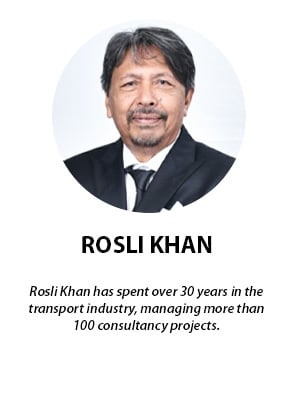 A big issue in the run up to this Hari Raya has been the high airfares for travel between Kuala Lumpur and destinations in Sabah and Sarawak.
A big issue in the run up to this Hari Raya has been the high airfares for travel between Kuala Lumpur and destinations in Sabah and Sarawak.
It is an issue that repeats itself at almost every festive season when “balik kampung” travellers attempt to return to the two Borneo states to celebrate with friends and family.
It is a matter which must be addressed immediately, failing which the same headlines can be expected to appear when Gawai, Kaamatan, the rain forest music festival, the school holidays, Christmas and Chinese New Year roll around again.
To put a lid on airlines profiteering during high demand periods, I recently proposed that ceiling airfares for flights to East Malaysia be studied and implemented. Another FMT reader, however, saw it fit to suggest otherwise.
Free market policy
I have no quarrel with allowing free market competition among airlines, especially for regional and international air transport sectors, and giving each the freedom to set fares for each route.
However, in many cases, competition is weak and vague, and quite often complicated by differences between government and private ownership of airlines.
Worse still, fair competition requires a level playing field, which often does not exist.
Air transport authorities tend to favour domestic airlines compared to those that are foreign-owned. Regulators also seldom take action against government-owned airlines for flouting air transport rules.
The recent high airfares fiasco in Sabah is a case in point.
Unique issues
KL-Kuching and KL-Kota Kinabalu are unique sectors. They are not similar or comparable to routes between Kuala Lumpur, Penang and Johor Bahru.
Those travelling between these three cities or anywhere within Peninsular Malaysia have the option of taking a train or the bus, driving their own or a hired car, flying, or even combining different modes of travel. There are at least four choices available to them, and the travel costs between the different modes do not vary widely.
However, in the case of travel between the peninsula and the Borneo states, the only available mode of travel is by air. No road or rail link exists, and no sea transport is available.
This unique geographical feature must be clearly understood. That is why no monopoly or airline cartel must be allowed to exist and ply these sectors.
Instead, greater regulatory control is necessary – not de-regulation or free market policies. A free market can only exist when alternative modes of transport are available.
A clear and transparent framework must be put in place for the benefit of both airline operators and passengers.
Fare control (or ceiling fares) must be set up immediately, if the government is serious in tackling this long-standing problem. Ad hoc “firefighting” strategies now in use will definitely not work in the long run.
Sufficient capacity
Participating airlines must guarantee sufficient capacity for all classes of air travel.
Otherwise, regulators must allow for charter flights to operate in this sector, especially during periods of high demand.
As stated earlier, the unique position of these sectors cannot be compared to sectors such as KL-Penang and JB-Penang or other local routes where airlines can be allowed the freedom to determine the airfares since alternative travel options exist.
Sabahans and Sarawakians, however, do not have that luxury. “We are stuck,” many East Malaysians studying in KL said recently, after finding out that all flights were full or that fares were just too exorbitant.
That is why the government must ensure there is a policy to ensure sufficient capacity in tandem with the imposition of ceiling airfares. The aviation authority’s role, which is to enforce the regulatory policy, will then become clearer.
Indonesian case study
Indonesia, made up of so many diverse and distant islands, offers a good case study.
The Indonesian civil aviation authority, known as Perhubungan Udara, has set a workable framework to regulate essential air travel between the country’s various island destinations.
Despite a tight control on the maximum airfares chargeable by participating airlines flying between clearly defined origin and destination airports, Indonesia’s aviation market continues to grow.
As at last year, there were more than 10 domestic airlines competing for a slice of the market of 52.56 million domestic passengers, with some 1,500 aircraft in operation.
In fact, Indonesia now boasts the world’s second highest domestic air market growth, behind only China.
I hope that explains why ceiling air fares are needed for Sabah and Sarawak. - FMT
The views expressed are those of the writer and do not necessarily reflect those of MMKtT.
No comments:
Post a Comment
Note: Only a member of this blog may post a comment.